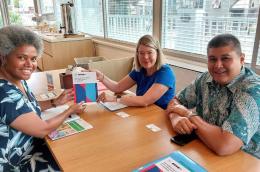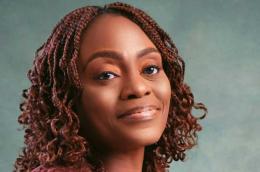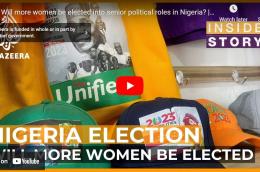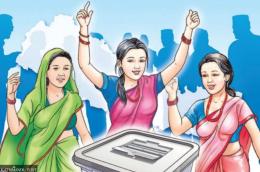Elections
Main navigation
The proportion of women among the candidates for the 2023 Finnish parliamentary elections is higher than ever before, according to a press release from the Finnish Statistics Centre. Women now account for 42.9% of candidates, which is 0.9 percentage points higher than the previous election in 2019. The majority of candidates in past elections have always been male, but now there are 1,039 female candidates compared to 1,385 male candidates.
The increase in women’s participation in parliamentary elections started in the 1970s, with the percentage of female candidates exceeding 40% for the first time in the 1991 elections. Since then, the percentage has hovered around 40% for a long time, but it has now surpassed that threshold in the 2019 and 2023 elections.
The percentage of female candidates varies by political party. The Green Party has the highest proportion of female candidates at 60.8%, while Liike Nyt has the lowest at 34.5%. In addition to the Green Party, the Social Democratic Party (SDP) and the Left Alliance have more female than male candidates. The feminist party has the highest percentage of female candidates at 84.6%, while the Citizen's Party has none. Overall, 47.5% of all candidates for parliamentary elections belong to women.
Click here to read the full article published by Helsinki Times on 22 March 2023.
Fiji has concluded the 2023 elections and the results are in. Although the Melanesian country has achieved the change in power that many had hoped for, the picture is less rosy for women’s representation in parliament. Could the offensive treatment women politicians received on social media be to blame?
The Fijian Elections Office approved 343 candidates from 9 registered political parties and 2 independent candidates for the 2022 General Elections. Of the total, 56 women ran for the elections, the same number as in the 2018 elections, although as percentage the rate has dropped to 16.3 per cent of the total number of candidates compared to 24.0 per cent in 2018 elections. This decline in the percentage was attributed to the fact that 55 seats were up for grabs compared to 51 seats in 2018. Since the number of seats increased, the number of candidates per party had increased to 55.
[[{"fid":"21711","view_mode":"media_original","fields":{"format":"media_original","field_file_image_alt_text[und][0][value]":"International IDEA ","field_file_image_title_text[und][0][value]":"International IDEA "},"link_text":null,"type":"media","field_deltas":{"1":{"format":"media_original","field_file_image_alt_text[und][0][value]":"International IDEA ","field_file_image_title_text[und][0][value]":"International IDEA "}},"attributes":{"alt":"International IDEA ","title":"International IDEA ","class":"media-element file-media-original","data-delta":"1"}}]]
In the 2014 and 2018 elections, the percentage of women contesting the elections were 17.7 per cent and 24.0 per cent respectively. Eight women were elected to the parliament after the election in 2014 and a record ten women were elected to parliament in the 2018 election. The 2022 elections, which were the third election under new electoral system, had the lowest percentage (16.3 per cent) of women contesting the election compared to 2014 and 2018. The result of the 2022 elections saw only six women elected to parliament which is the lowest number so far under the new electoral system. There has been extensive work done to advance women’s leadership skills for several years in a bid to improve women’s representation in parliament by various stakeholders such as civil society organizations, development partners and political parties in Fiji.
Click here to read the full article published by International IDEA on 3 March 2023.
The call for an increase in the representation of women in governance and other leadership positions has remained a mirage in Nigeria, with several factors militating against it, especially since the advent of the Fourth Republic.
Although a total of 93,469,008 citizens, comprising 49,054,162 males and 44,414,846 females are eligible to vote in this year’s general election, records from the Independent National Electoral Commission (INEC) show that only about 10 per cent of the candidates are women.
According to the Executive Director, Baobab for Women’s Human Rights, Bunmi Dipo-Salami, only one out of 18 presidential candidates is a woman, and not a single woman is being fielded as vice presidential candidate.
Similarly, women constitute only six per cent of the 416 candidates contesting for governorship across the 36 states. Only 8.4 per cent of the 1,101 candidates gunning for senatorial seats are women; and of the 3,122 candidates contesting for seats at the House of Representatives, only 288 are women. At the level of the sub-national legislatures, only 1,046 out of the 10,225 candidates are women.
Click here to read the full article published by The Guardian Nigeria on 18 February 2023.
One female candidate in the conservative north is raising expectations she could become Nigeria's first elected state governor. 93 million people are registered to vote in the country's elections on February 25. Nigeria is the most populous in Africa. It also has the continent's largest economy and is its top oil producer. But with rising inflation, high unemployment and insecurity in the northeast, a lot is at stake. Eighteen candidates are running for president, including a woman. And more than a dozen women are candidates for governor posts, while others are running for parliament at state and national levels. So will Nigeria's voters elect more women into senior political roles?
Source: Al Jazeera English
Half of Nigeria’s population are women, but only 4 percent were elected in the 2019 election. Will the 2023 election be any different?
Ago-Iwoye, Nigeria – On June 8, 2022, millions of Nigerians were glued to their phones, televisions, and other devices, watching the presidential primaries of the ruling All Progressives Congress (APC).
Then something happened. Uju Ken Ohanenye, the only woman among the 23 aspirants, withdrew from the contest in favour of the eventual winner and national leader of the party, Bola Tinubu.
“I have decided to step aside for the lifesaver who is Asiwaju Bola Ahmed Tinubu,” the lawyer and entrepreneur who had previously told journalists that “the touch of a woman is lacking in the governance of this country”, said on national television.
For some Nigerians, it was a step back for gender equality in the country’s politics but also a timely reminder of the many hurdles women face in attaining leadership roles in this vast West African country.
Click here to read the full article published by Al Jazeera on 16 February 2023.
Election Commission is drafting a bill to increase women’s candidacy in all three tiers of government by a third.
At least one third of the elected representatives in the federal parliament must be women, as per the Constitution of Nepal. The constitutional provision has been met so far by inducting women representatives through proportional representation.
The parties have always prioritised male candidates over female in the first-past-the-post (FPTP) elections. Despite pressure from women leaders from across the political spectrum, their share has always been low in direct elections.
Among 2,412 candidates for the FPTP system of elections for the House of Representatives in November, only 225 (9.33 percent) were female, while over 90 percent (2,187) were male. In the provincial assembly elections, only 280 of the 3,224 candidates for the 330 seats in play were women.
Click here to read the full article published by The Kathmandu Post on 2 February 2023.





